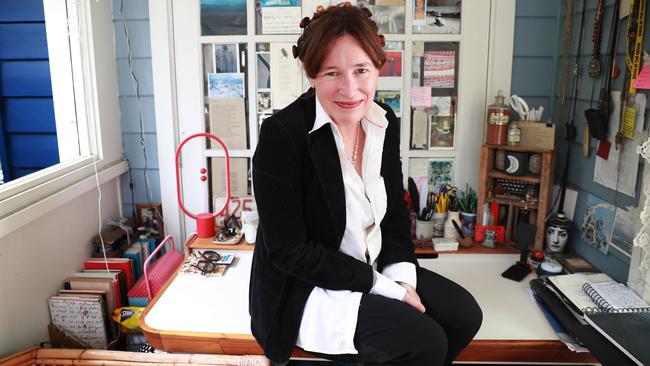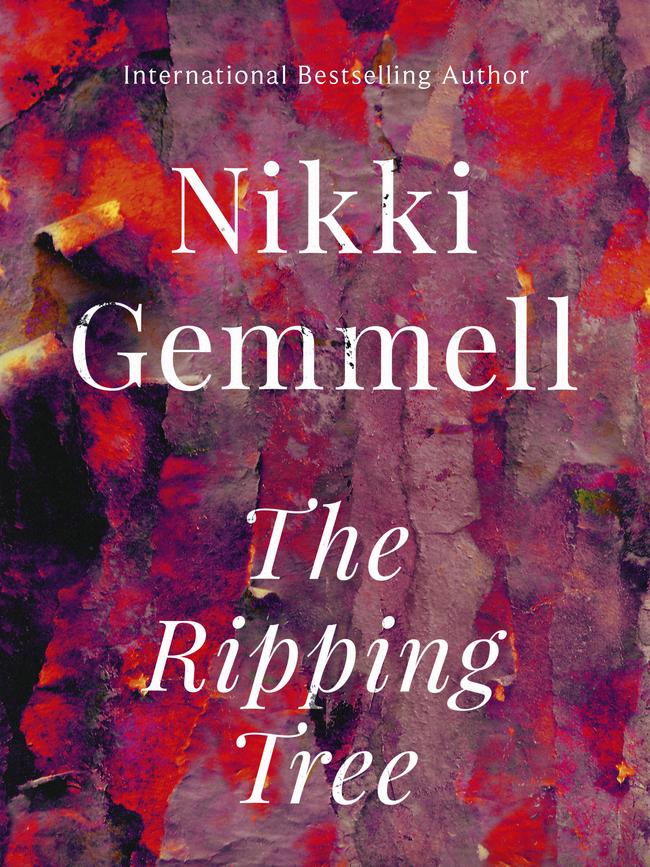Colonial-era Australia an unsettling place in Nikki Gemmell’s The Ripping Tree
Australians’ incuriousness, maintained so determinedly and for so long, suggests there are things about this land and our place in it that we have no wish to learn.

Colonial-era Australia presented a conundrum for writers of Gothic fiction, the dominant literary genre of that time. The continent possessed no ruined abbeys, no castles, no hermit’s caves for authors to hang their narratives of terror and the sublime upon. European presence seemed too new to supply the deep-rooted historical requirements of the form.
Yet the antiquarian imaginations of those who came found plenty that accorded with traditional conceptions of the Gothic. Rock formations took on the outlines of cathedrals or druids’ stones in early written accounts by Europeans. Deserts of the interior inspired feelings of claustrophobic enclosure rather than openness to those who explored them. Australian space turned out to offer regions of weirdness and deep antiquity matching anything Anne Radcliffe or Horace Walpole might summon on the page.
Nikki Gemmell’s new novel, her 13th, proceeds in full knowledge of the ways antipodean place corresponds to older Gothic tropes. And it manipulates these, often superbly, to replenish the ability of the genre to shock and disturb.
The Ripping Tree presents itself as a self-conscious pastiche of colonial Gothic and, like those original 19th century fictions, it is designed to thrill and entertain. But it also reminds us that this continent remains unsettling to those who settled it.
The novel’s power emerges from an awareness that many of us, even today, remain strangers to Australian place. It intimates that such incuriousness, maintained so determinedly and for so long, suggests there are things about this land and our place in it that we have no wish to learn.
Gemmell trims and domesticates these larger notions to fit a severely constricted frame. Readers are plunged directly into an account of a shipwreck off an unnamed point on the Australian coast, sometime in the early 1800s. From the vessel dashed against sandstone cliffs, one survivor (as far as we know) emerges: Thomasina Trelora – or Tom, as she prefers.
A literal tomboy, then. In reality, she is a spirited, educated, questing young woman who has had the misfortune of being born ahead of her time. Raised motherless by a gentle and liberal-minded father in the relative isolation of England’s southwest, Tom has been allowed to run wild. She has enjoyed the freedom to shape the cast of her own mind.

All of which means that, following her father’s death, she is wholly unsuited for the official prerogatives of her class and gender. Tom’s passage was a fait accomplis engineered by her dull and grasping older brother and sister-in-law. The couple intended to divest themselves of the young woman on their way to a new home in the colonies, having offered her up as a mail-order bride to a local man of the cloth.
The wreck up-ends these plans. It drowns Tom’s family and leaves her, an unknown woman in a strange land, cast up near the grounds of an estate named Willowbrae. Willowbrae is a homesick replica of its “mother country” cousins: an oasis of solid stonework and European greenery plonked down among the massed olive drab of the Australian bush.
And the family that calls Willowbrae home? They’re homesick, too; though for an idea of home, perhaps, more than any actuality. They are a classic instance of the settlers who have only partially accommodated themselves to novel space – who live betwixt and between.
The Craw family have prospered materially from their move to the colonies, but they have sacrificed a great deal in doing so. Miniature headstones in the family cemetery explain why the otherwise tough and taciturn matriarch of the family nurses the young woman – nicknamed “Poss” in the absence of any remembered name – and expresses hope that she might stay on as governess to her youngest son.
All this we learn over a matter of hours, via a series of conversations over the convalescent’s sickbed and Poss’s own recollections. Only we are privy, however, to the young woman’s version of events. The existence of a mysterious “native” who gathered her, close to death, from the coast and delivered her to Willowbrae is kept back from the Craws. As is the intelligence that she was travelling with family and set to wed.
The alternative presented by the Craws is more attractive to Poss than acceding to marriage with a man she has not met. All she has to do is maintain a tactical, selective amnesia and freedom might be hers once again.

The Ripping Treeis the kind of novel that is damaged by spoilers; ambiguity is the oxygen of its plot. What can be said is that not every member of the Craw family welcomes Poss equally. Readers, meanwhile, have a strong sense that she has stumbled into a situation where something terrible has already happened: a breach in the natural order soon confirmed by a discovery she and the youngest son of the family make on a brief foray outside the grounds of the estate, beneath the “ripping tree” of the title.
Gemmell has always had a deft touch for narrative. Here she takes the panoply of effects Gothic has to offer and drives them till they are blowing froth and bleeding at the flanks. There is the escalating sense of panic as Poss realises the true grounds of her situation; the intensifying feelings of claustrophobia inspired by Willowbrae, a house which the Craws are ever more insistent that Poss should not leave; and the shock of recognition, after an encounter with one of the other locals, that her true identity may not be so easily shed.
Part of what lifts the novel out of clever imitation and points it toward the current moment is its treatment of women. The confinement Poss feels is not some trick of architectural perspective, it is a structural feature of gender: a condition she is bound by, right down to the skirts the mistress of the household insists Poss wear. The threat of male violence and male desire hangs over the narrative. Poss, who is susceptible as anyone to the mixture of mystery, danger or entitlement the Craw men possess, stands fixed in the spotlight of their attentions.
Readers of Australian history will appreciate the version of colonial womanhood Poss represents: unhomed, unnamed and disempowered; threatened externally by the alienness of Australian place and domestically by men who order her existence or menace instead of protecting.
But it has been Australian writers of Gothic temper, from Rosa Praed to Barbara Baynton, who have used imagination to give human shape to that experience. Gemmell has joined them in making something vital out of such historical abstractions.
In her simple drive to live and think freely, Poss reveals the paradox of reconciling female agency with patriarchal structures. To desire such freedom is a form of madness: the hysteria, in fact, the Craw family decides Poss suffers from. It is a form of madness that Gemmell wields like a cudgel, exposing the lies and hypocrisies of the community in which Poss discovers herself. A madness, indeed, that reveals the secrets held, not just by one family of settlers but of a society in its totality.
Geordie Williamson is chief literary critic of The Australian.
The Ripping Tree
4th Estate | PB | 352 Pages | $32.99




To join the conversation, please log in. Don't have an account? Register
Join the conversation, you are commenting as Logout